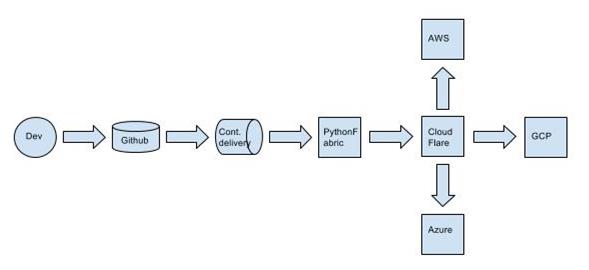DevOps Sprawl
Is DevOps suffering from over-automation? The promise of DevOps is faster application deployment, such as multiple updates per day. The development methodology is central to the success of Apple, Google, Facebook, Amazon and other tech heavyweights. According to Gartner the DevOps tools market is $3 billion in 2017, up 21.1 percent from 2016. Mainstream enterprises, such as WalMart and Bank of America, have caught on with big investments in DevOps.
This week I talked with Jared Wray, founder of Fons and previously founder of Tier 3 cloud hosting which was acquired by CenturyLink. He thinks developers can rely on four tools to write, test and deploy applications: Github, Jenkins, Fabric and Cloudflare. And then deploy to their favorite clouds.
There are hundreds of DevOps apps and services, many of them are unnecessary. Over-automation may be the culprit. David Linthicum recently wrote that when large enterprises get on board with DevOps they often go overboard. DevOps sprawl happens when organizations think that more is better. Many enterprises take DevOps to an unproductive extreme. In an attempt to automate development processes, people link together too many tools and end up over-automating. This level of DevOps automation can lead to all sort of undesirable outcomes.
But don’t cancel your Crittercism subscription just yet. While many of the applications call themselves DevOps to increase sales leads, there is tremendous value in a large number of the new developer tools. For example, where are the containers Docker and Kubernetes? Where are the NoSQL database vendors? What about the monitoring tools like PagerDuty? Where are the security apps like Solar Winds? Sysadmins and developers rely on cloud infrastructure management tools like Chef and Puppet? It seems limiting to say there’s only one way to slice it while restricting the stack to four apps. Even more so when you think of the thousands of companies adopting DevOps now, each with their own requirements.
I agree that the DevOps hype cycle has attracted a lot of vendors who have no business branding their tools as DevOps. But there are 18 million software developers worldwide and they don’t all fit into neat boxes. Perhaps more importantly, this category is prone to dramatic innovation swings. When those inflection points come a new crop of tools will rise to answer it.

